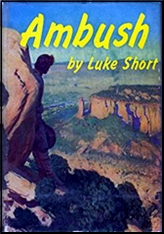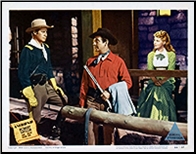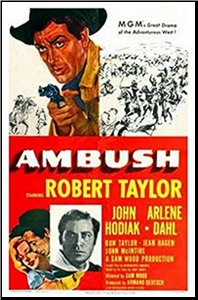FIRST YOU READ, THEN YOU WRITE
by Francis M. Nevins
I’ve never been a big fan of Captain Hugh Drummond but he was one of the first characters in crime fiction to swim into my ken. Among the books on my father’s shelves was a hardcover reprint of the 1920 novel that introduced Captain Hugh, titled simply BULLDOG DRUMMOND, with stills from the 1929 talkie of the same name that starred Ronald Colman.

At around age ten, or maybe it was eleven or twelve, I tackled that book. Sixty-five years later, all I remember is that one of the king toads was a bloke named Henry Lakington who had a penchant for dissolving bodies in an acid bath. Drummond sets a trap for him and he winds up screaming madly as he lurches up a staircase after being plunged into his own tub, while Drummond intones: “Henry Lakington, the retribution is just.â€
Pretty powerful stuff for a pre-adolescent back in the early Fifties.
I have a vague recollection that someone was found tortured with a thumbscrew, probably by Lakington, earlier in the proceedings. If only I had squirreled away my father’s copy of the book after he died, I could find out whether these juvenile memories are accurate. But I didn’t, which demonstrates, as I said before, just how little of a Drummond fan I’ve always been.
According to the ST. JAMES GUIDE TO CRIME & MYSTERY WRITERS (1996) there are a total of ten Drummond novels. Their author was Herman Cyril McNeile (1888-1937), who served during World War I in Britain’s Royal Engineers and rose to the rank of Lieutenant Colonel. His branch of service explains why in England his byline was Sapper. We’re not in England so I’ll call him McNeile.
The fact that I own only two of the Drummond novels somewhat limited my options when I recently decided to revisit the old Bulldog. The title I chose was BULLDOG DRUMMOND STRIKES BACK (1933), which comes late in the series and only four years before McNeile’s death. Why I picked that one I’ll explain later.

Despite the title — I should say despite the U.S. title because in England it was published as KNOCK-OUT — we open not with Drummond but with another McNeile character, a wealthy cricket-playing amateur sleuth named Ronald Standish who never caught on as Cap’n Hugh did. On a blustery evening in March, while relaxing in his rooms in London’s Clarges Street, Standish receives a phone call from James Sanderson, a high Home Office poohbah, which is cut off almost as soon as it begins.
Suspecting foul play, Standish rushes into the night, breaks into Sanderson’s house in Hampstead five minutes away, and finds the man dead at his desk with a horrible hole through his eye. No sooner has he found the body when someone else enters Sanderson’s study. That visitor turns out to be Bulldog Drummond, and both adventurers quickly find themselves in hot water of the Edgar Wallace variety.
The constable summoned by Sanderson’s butler turns out to be a fake. While Drummond and Standish are out fetching the real police, Sanderson’s house is invaded and torched. Back in the Clarges Street flat, Standish is drugged with his own whiskey — a fate Cap’n Hugh avoids by happening to choose beer as his tipple — and the place is invaded by three heavies whose casual conversation leads the undrugged Drummond to two more of the ungodly, a prominent surgeon and a beautiful blonde film star, and so on and on into the depths of a plot by international moneymen to sabotage the already staggering British economy.
From the secondary literature one gets the distinct impression that McNeile’s once-famous protagonist is a xenophobic brute with no redeeming social qualities. We naturally expect that if a Jewish character should rear his hook-nosed head in a Drummond novel he’d be the worst sort of anti-Semitic stereotype.

Surprise! Samuel Aaronstein, proprietor of a second-hand clothing store in Whitechapel and purveyor of disguises whenever the Bulldog needs one, bears no trace of what we might expect to find in McNeile unless one takes offense at a character who says vell for well and vith for with.
Another of the surprises in STRIKES BACK I’d call neither pleasant nor unpleasant but just surprising. The lovely blonde film star I mentioned earlier turns out to be a clone of none other than Mae West. “Say, big boy,†she says after meeting Drummond at a party, “you’re talking boloney.†And later: “Come and see me some time, big man.â€
If you object that such lines don’t sound veddy British, McNeile agrees with you. “Say, Miss Frensham,†she says later to her secretary, who is now serving as the mole in the enemy camp, “I guess it’s customary in this country to give notice, the same as in mine.†There can be little doubt what country she’s claiming as her own. In other scenes McNeile forgets that the woman is supposed to be a Yank and gifts her with conventional Brit locutions.
For xenophobia hunters the prime target in STRIKES BACK is the man behind the conspiracy to cripple the British economy, a cueball-headed Greek with the unsubtle name of Demonico who has a penchant for disguising himself as an old woman if things get too hot. He is sporting this getup at the climax when Drummond puts a hole in him.
The reason I decided to dig into this particular McNeile novel is that at least nominally it was the basis for perhaps the best of the many movies about Cap’n Hugh that came out during the first dozen years of talkies. BULLDOG DRUMMOND STRIKES BACK (20th Century/United Artists, 1934), like its predecessor BULLDOG DRUMMOND (Goldwyn/united Artists, 1929), starred Ronald Colman.

Featured in the cast were Loretta Young as Lola Field and Warner Oland as the wily Prince Achmed. Neither these nor any other characters in the movie have counterparts in the novel, except of course that Achmed is as slimy a foreigner as the novel’s Demonico. Dealing as it does with the disappearance of Loretta Young’s uncle under circumstances that make it appear he never existed, the movie’s plot anticipates Hitchcock’s THE LADY VANISHES (1938) and several thematically similar stories by Cornell Woolrich like “All at Once, No Alice†and “Finger of Doom†(both 1940), but you’ll find nothing remotely akin to it in McNeile’s novel.
For anyone who wants a quick and painless refresher course on the complete run of Drummond movies — right down to the laughable attempt in the late Sixties to turn Cap’n Hugh into a James Bond clone — the reading assignments are Chapter 6 of William K. Everson’s THE DETECTIVE IN FILM (1972) and pages 61-73 of Jon Tuska’s THE DETECTIVE IN HOLLYWOOD (1978).
Bill Everson (1929-1996) was a good friend of mine for several decades. When the two of us put together an elaborate mystery film series 30 years ago for St. Louis County’s Webster University, STRIKES BACK was one of the pictures on the program. What makes it work, we said in our program note, is that the men who made it, primarily director Roy Del Ruth and screenwriter Nunnally Johnson, trashed McNeile’s right-wing xenophobia and reconfigured Drummond as “a dashing, romantic, essentially comic character, all his adventures played tongue in cheek.â€
For the Bulldog of the airwaves all you need to read is the entry on the series in John Dunning’s ON THE AIR: THE ENCYCLOPEDIA OF OLD-TIME RADIO (1998). I’ve never sampled this program, which was usually set on the American side of the pond and, says Dunning, “was remembered for years by people who thought it better than it was.â€
The most recent incarnation of Cap’n Hugh was in the parodic stage play BULLSHOT CRUMMOND (1974) and the later movie of the same name (1983). “Much of the play’s humor,†we learn from Wikipedia, “comes from its audacious (and intentionally failed) efforts to recreate film effects on stage.†The script was “designed to be performed by only five actors, one of whom plays seven characters.â€
On my birthday many years ago I happened to be in San Francisco, where the play was first performed, and was taken to see it by a former student, a mercurial little sexpot who had left St. Louis and settled in the city she found so beautiful she could never live anywhere else.
I remember nothing of the play. The woman with whom I took it in I immortalized, if that’s the word, in three of my Loren Mensing novels plus a Milo Turner short story. On paper she still lives. In real life she died horribly in her early fifties. Thank you, Lou Gehrig. Not.




